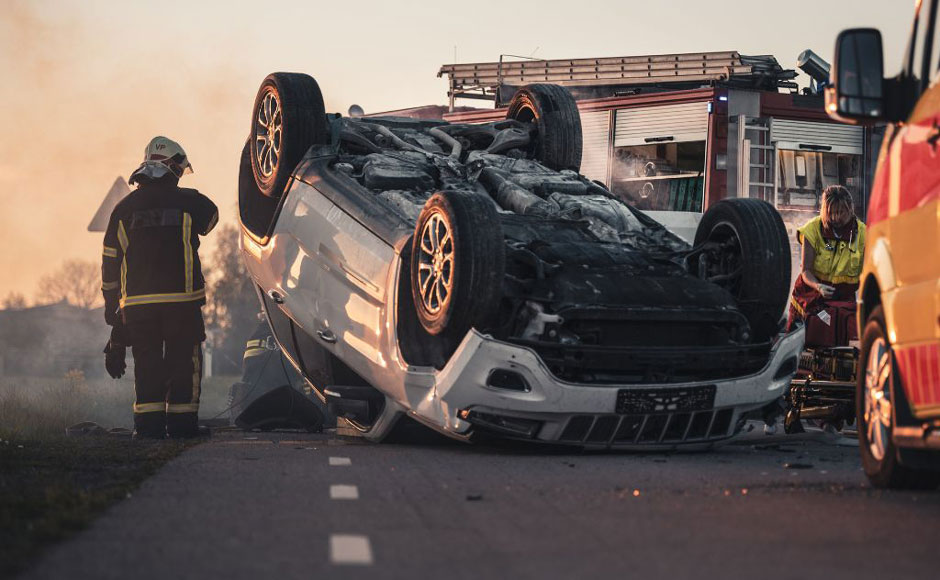Being involved in a car accident can be a traumatic experience, often resulting in injuries, property damage, and financial burdens. However, understanding the legal principles governing auto accident claims is crucial for victims.
Michigan experiences a wide range of weather conditions throughout the year, including heavy snowfall, ice, fog, and rainstorms. These adverse weather conditions can create hazardous driving situations, reducing visibility and making roads slippery, increasing the risk of accidents.
After going through the medical checkup and getting on a path to recovery, individuals involved in an accident must approach insurers and open a dialog for arbitration. However, that sounds easier said than done. This is why victims chose to seek legal representation to process restitution claims seamlessly.
While going through the process, an in-depth understanding of modified comparative negligence in car accidents, specifically within Michigan, becomes imperative. Whether you’re a victim seeking legal assistance or simply looking to understand your rights, this guide will shed light on this critical legal concept and how it is used in a legal framework.
Comparative Negligence in the State
Michigan follows a modified comparative negligence system for determining liability in car accident cases. This system allows for assigning fault to multiple parties involved in an accident, including the injured victim. The concept of comparative negligence acknowledges that multiple parties may contribute to an accident to varying degrees.
Modified Comparative Negligence: 50% Bar Rule
The state’s modified comparative negligence rule includes the “50% bar rule.” According to this rule, an injured party can seek compensation only if their percentage of fault is 50% or less. If a victim is found to be 51% or more at fault for the accident, they are barred from recovering any damages from other parties involved.
Impact on Damages Awarded
Their percentage of fault directly impacts the amount of compensation awarded to an injured party. The damages awarded are reduced proportionately based on the degree of fault assigned. For example, if a victim is deemed 20% at fault and is awarded $100,000 in damages, their final award would be reduced by 20% to $80,000.
Comparative Negligence and No-Fault Insurance
Michigan has a unique no-fault insurance system, meaning that car accident victims generally seek compensation from their insurance companies for medical expenses, lost wages, and other economic losses. However, in cases where the victim’s injuries meet the threshold for a “serious impairment of body function” or result in death, they may have the right to file a third-party liability claim against the at-fault party.
Proving Negligence in Car Accidents
To establish negligence in a car accident claim, the injured party must demonstrate the following elements:
- Duty of Care: The plaintiff must show that the defendant owed them a duty of care. In car accidents, this duty is typically established by demonstrating that all drivers are responsible for operating their vehicles safely and following traffic laws.
- Breach of Duty: The injured party must prove that the defendant breached their duty of care. This can be shown by demonstrating that the defendant acted negligently or failed to exercise reasonable care while driving.
- Causation: The plaintiff must establish a causal connection between the defendant’s breach of duty and the injuries suffered. They must show that the defendant’s actions directly contributed to the accident and resulting harm.
- Damages: Lastly, the injured party must provide evidence of the damages they have suffered due to the accident. This can include medical bills, lost wages, pain and suffering, and other related losses.
Importance of Legal Representation
Given the complexities of car accident claims and Michigan’s modified comparative negligence system, seeking legal representation from an experienced personal injury attorney is highly recommended. A skilled attorney can help gather evidence, navigate the legal process, assess liability, and negotiate with insurance companies to ensure fair compensation for the victim’s injuries and damages.
Conclusion
Understanding modified comparative negligence in car accidents is essential for victims seeking compensation in the state. The framework acknowledges shared fault among parties involved and applies the 50% bar rule to limit recovery. By grasping these concepts, victims can better navigate the claims process, protect their rights, and seek fair compensation.

